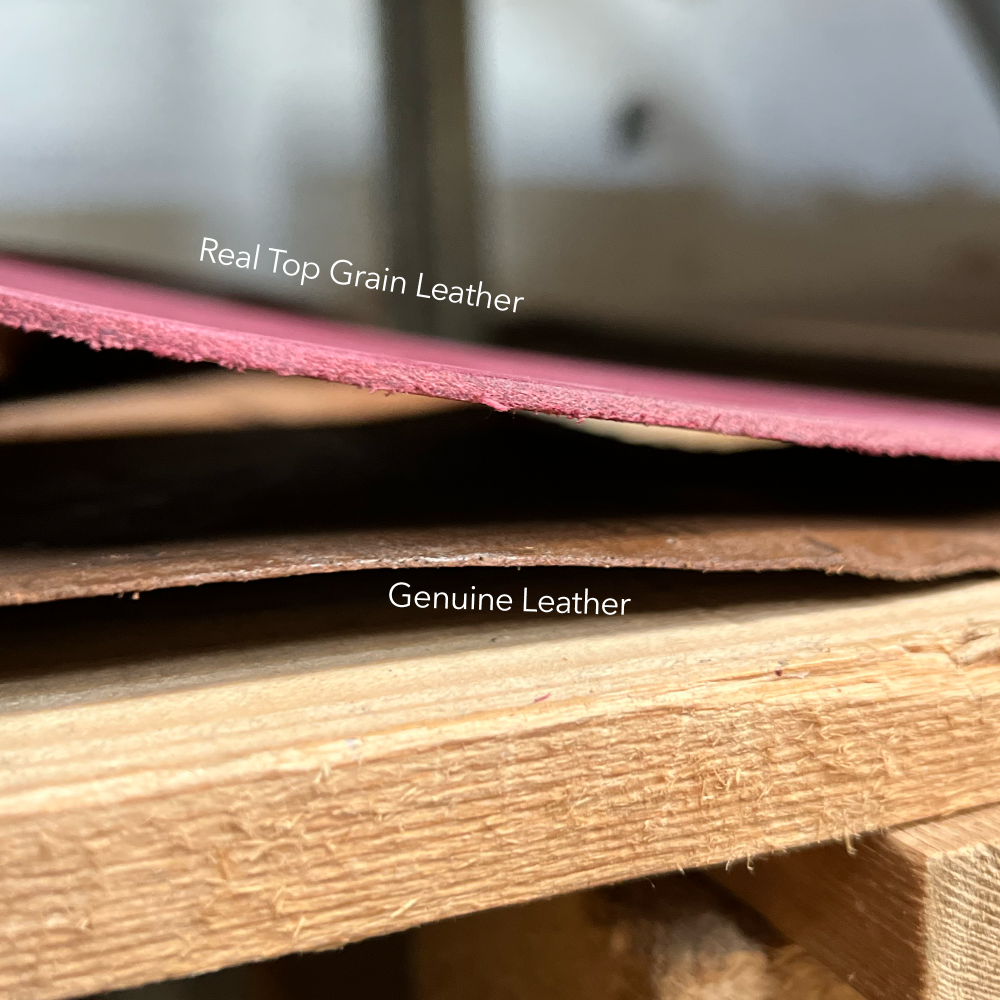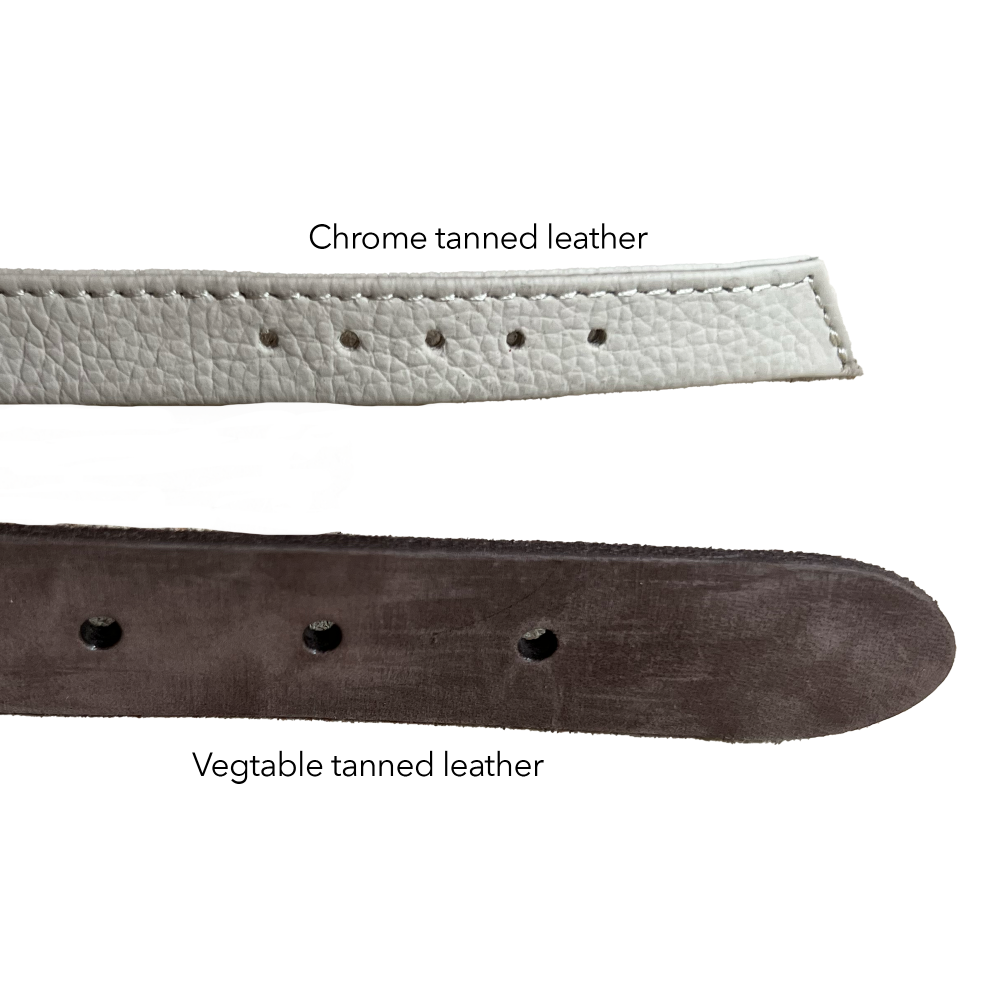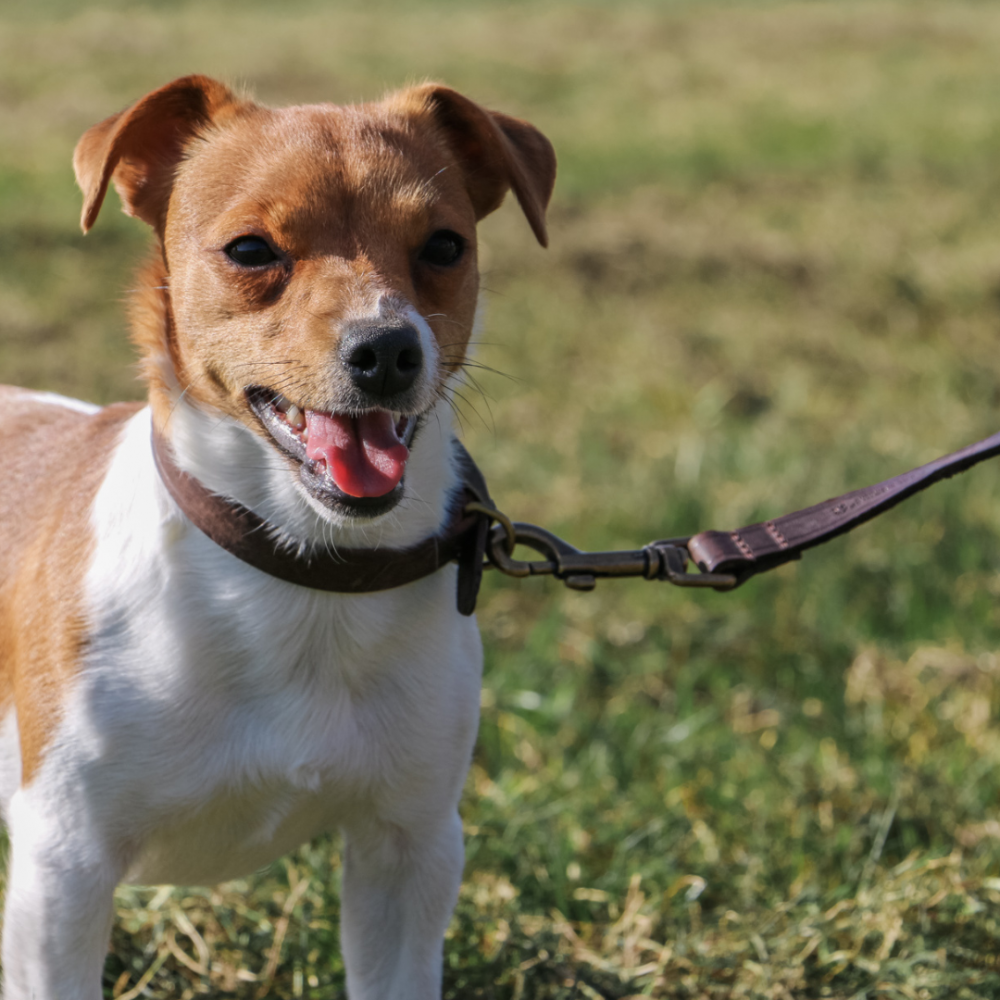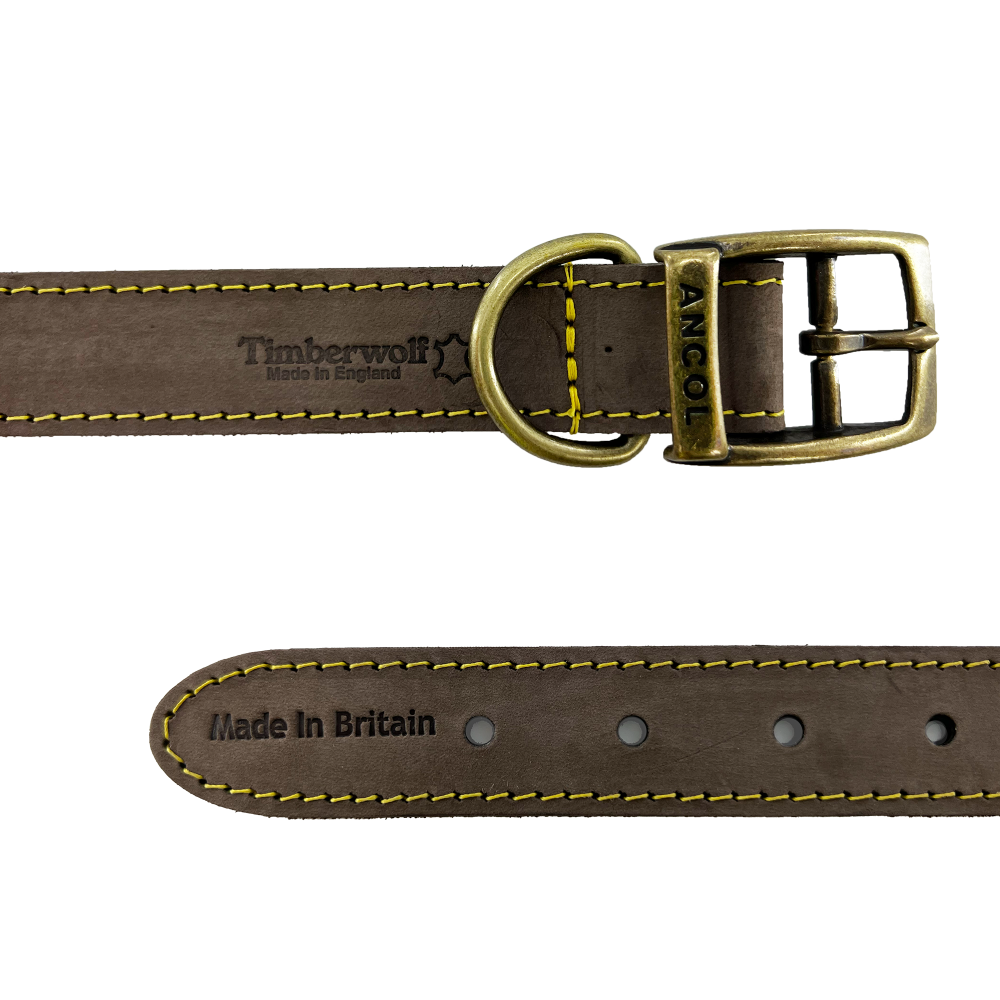
Let's be 'Real' with Ancol leather?
Posted: 04 / 05 / 23Genuine or Real, what’s better?
Both are from a leather hide but they aren’t the same quality.
Genuine leather is made from leather but it is at a lower quality, due to its lower quality it means that it doesn’t look nice or last as long. You will typically find genuine leather belts, purses and shoes. Goods marked as genuine leather are usually made from several layers of low grade leather that have been painted to looking uniform. If you are using these products everyday they will wear a lot quicker.
Real leather is a natural material made from real animal skin. It's surface structure will not be completely uniform and will include blemishes and imperfections. Signs of imperfections are a good sign in leather. Real leather comes in three forms, full grain, top grain and split grain. Full grain is the best quality and split grain is the lowest quality. Top grain is done when splitting the full grain leather.

Full grain, Top grain or split grain?
Full grain leather is the best grade of leather to use. Full grain uses the whole of the hide, with all the imperfections and inherits the toughness of the material. This leather is naturally marked with the imperfections of the animal. Retaining strength and durability with better breathability resulting in less absorbed moisture.
Top grain leather is made by splitting a full grain piece of leather, stripping the underlay from below and keeping the top 4mm. The grain is sanded and a finish coat is added which provides a greater resistance to stains in comparison to full-grain leather. We use the top grain of the leather, this is because we need the top 4mm for the collars and leads.
Split grain leather is the poorest quality of leathers. Split grain is created from the top-grain being separated from the rawhide. Split leather has an artificial layer applied to the surface. Suede is one of the most commonly known, and used, types of split leather out there. The reason it is “furry” on both sides is because it has the grain complete removed therefore features a fleshed surface on both sides.
What’s the difference between vegetable tanned leather and chrome tanned leather?
Vegetable tanned leather is using a natural process, this uses tannins and other organic matters to create a light brown colour hide that is supple to the touch. This is an expensive way to colour the leather but it gives the leather a longer lifespan. The colour shade can be adjusted according to the tannin mix and the original colour of the skin. Vegetable tanning is using natural materials like tree bark. Vegetable dying takes a long time and is submerged in the mixture for over several weeks to create the colour. This is typically more expensive leather.
Chrome tanned leather is a faster process and completely different and a much cheaper way to dye leather, not to mention a lot more damaging on the environment. The leather is dyed using chromium metal, this is not only damaging to the environment, it is toxic. The toxic wastewater from the chrome tanning process can seep into the ground and affect soil and groundwater supplies. Chrome tanned leather can be done within 24 hours. You can spot a chrome tanned leather quite easily as it will tend to crack, peel or even split and a few years
Without the tanning process the hides would start to rot like any other natural material.

How you can look after your leather products?
To keep the leather in its best condition here are some simple tips.
Some dogs love water, some not so much. Leather is a porous product so when wet some of the colour may run out of the natural dye. Due to the leather being porous, if your dog decides to play in the water or gets completely soaked on a wet walk, when you get home take the collar off and let it air dry. Don’t put your leather collar or lead near heat sources and never blow dry it.
To keep your Classic, Latigo, Vintage leather in tip-top shape, we recommend treating with a conditioner annually. Use a conditioner specifically for leather. With proper care, you can expect to get years of use from your vegetable-tanned leather goods.

(Jack russell is in Latigo - Havana collar and lead)
Due to the soft finish on our Timberwolf leather, we do not recommend putting leather conditioner on it, it will ruin the soft finish on the product. With our timberwolf leather, you can expect years of use from it despite this but please monitor the collar for wear and tear.

(Rhodesian Ridgeback is in a Timberwolf Blue collar)
What is your Ancol leather collar?
Ancol Leather is real top grain leather that has been vegetable tanned. We have been using real top grain leather from the start and we will continue to. We manufacture our leather collars and leads here in the UK, they are made from British Bridle leather. So everytime you buy an Ancol leather collar, you can proudly and safely know that is has been made by our talented craftspeople straight from our factory in Walsall.




